Conjoined twins’ separation – a complex feat
Conjoined twins’ separation – a complex feat
October 31, 2011
Tomorrow is the “big day” for conjoined twins Angelina and Angelica Sabuco. The San Jose, Calif. two-year-olds are being surgically separated tomorrow atLucile Packard Children’s Hospital. They were born joined at the chest and abdomen and were first evaluated at Packard Children’s nearly a year ago. Their operation is the culmination of months of complex planning by teams from all over the hospital, as a Packard Children’s press release describes.
When talking with the twins’ physicians, I learned many details of the challenges they’ve surmounted to make separation possible. Here are some highlights:
> To plan the surgery, the physicians needed to see if the girls shared any portion of their hearts. Getting good pictures of the hearts required the radiology team to inject contrast dye into the two girls’ circulatory systems simultaneously, then quickly and carefully position them in the CT scanner so that both hearts could be captured in one image, said radiologist Frandics Chan, MD. The images showed that Angelina and Angelica’s hearts are separate, though they may touch at the tips. This is good news, as separate hearts will make the surgery less risky.
> The anesthesia team, led by Gail Boltz, MD, had the task of planning where each piece of equipment would stand in an operating room that will be crowded with more than 20 physicians and nurses. Fortunately, they’ll have the benefit of Packard Children’s large, state-of-the-art Ford Family Surgery Center, whose new operating rooms opened in December 2008. When Packard Children’s separated another pair of twins in 2007, the power supply to the older operating room they used had to be upgraded to provide enough juice for all the equipment.
> The most difficult part of the separation will be dividing the girls’ livers, according to lead surgeon Gary Hartman, MD. Their livers are fused to each other along the longest dimension. At least two large blood vessels that cross from one child’s liver to the other will have to be carefully tied off. “One quarter of the body’s blood supply passes through the liver each minute, so the risk of hemorrhage is significant,” Hartman said.
> Each girl will be left with a large separation site, about the size of a standard envelope, which will need to be closed with new skin. To plan ahead for this challenge, plastic surgeon Peter Lorenz, MD, inserted tissue expanders under the girls’ skin in July. The expanders are essentially small balloons which were gradually inflated with saline to stretch the skin, prompting the growth of about 32 square inches of extra skin on each child. Under the skin, each girl will have a custom-made resorbable plate implanted where the sternum should be. Bone pieces grafted onto the plates will gradually grow to replace them so that the girls will eventually have normal sternum bones.
In spite of the many complexities of the surgery, it will be much like any other major operation to a child’s chest and abdomen. As Boltz told me, “First and foremost they’re children – they’re pretty much like any other kid except that they’re conjoined.”
###
Conjoined Twins Angelina and Angelica Sabuco
Angelina and Angelica Sabuco are conjoined twins. They underwent separation surgery at Lucile Packard Children’s Hospital on November 1, 2011.
The girls were born in the Philippines in August, 2009, and live in San Jose, Calif. The sisters love Dora the Explorer, Elmo, and listening to stories and music. They also know their colors and can count to 10.
Background on Angelina and Angelica’s Surgery
- Most conjoined twins do not survive pregnancy. The occurrence of conjoined twins is estimated to range from 1 in 50,000 births to 1 in 100,000 births worldwide, and the overall survival rate is approximately 25 percent.
- Separation surgery is performed in the United States about six times per year.
- Angelina and Angelina are classified as thoraco-omphalopagus; they are joined at the chest and abdomen. Their livers, diaphragms, sterni (breast bones), chest and abdominal wall muscles are fused. They have separate hearts, brains, kidneys, stomachs and intestines.
- This will be the sixth separation of conjoined twins for lead surgeon Gary Hartman, MD.
- This is the second set of conjoined twins separated at Packard Children’s. Yurelia and Fiorella Rocha-Arias were separated at the hospital in November 2007.
Conjoined Twins Photos. Photos courtesy of the Sabuco family.
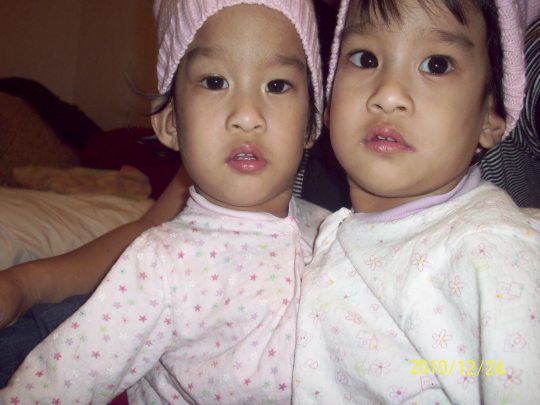 Angelina and Angelica on Christmas Eve, 2010
Angelina and Angelica on Christmas Eve, 2010
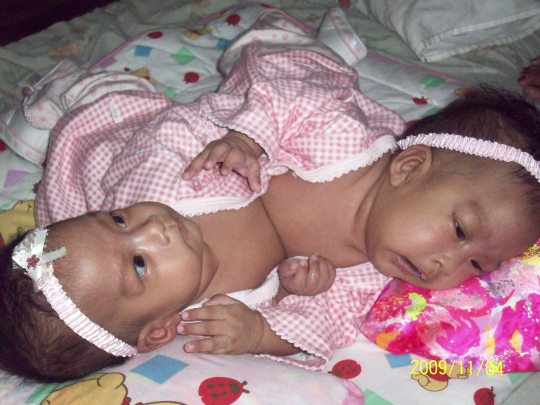
Angelica and Angelina in the Philippines at 3 months old
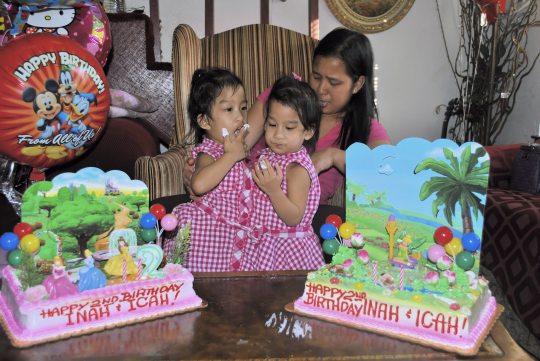 Angelina and Angelica at their 2nd birthday party in San Jose, Calif.
Angelina and Angelica at their 2nd birthday party in San Jose, Calif.
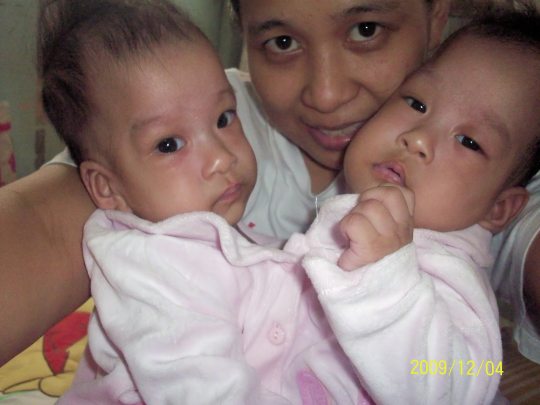 Angelica and Angelina in the Philippines at 4 months old with their mother, Ginady
Angelica and Angelina in the Philippines at 4 months old with their mother, Ginady
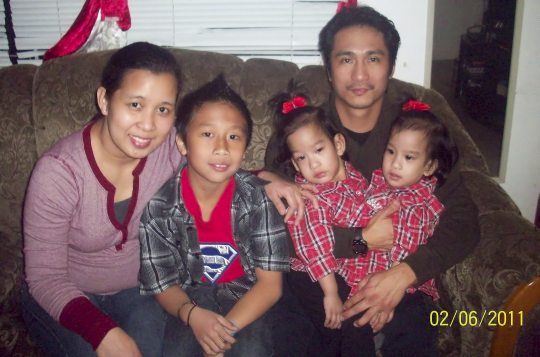 Ginady (mother), Vincent (brother, age 10), Fidel (father), Angelina and Angelica get ready for church
Ginady (mother), Vincent (brother, age 10), Fidel (father), Angelina and Angelica get ready for church
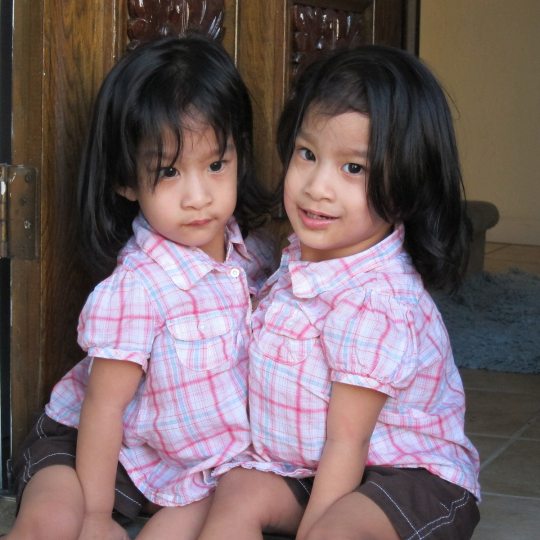 Angelica and Angelina
Angelica and Angelina
###
** Stanford University Medical Center integrates research, medical education and patient care at its three institutions – Stanford University School of Medicine, Stanford Hospital & Clinics and Lucile Packard Children’s Hospital.
*** The above story is adapted from materials provided by Stanford University School of Medicine
________________________________________________________________





















